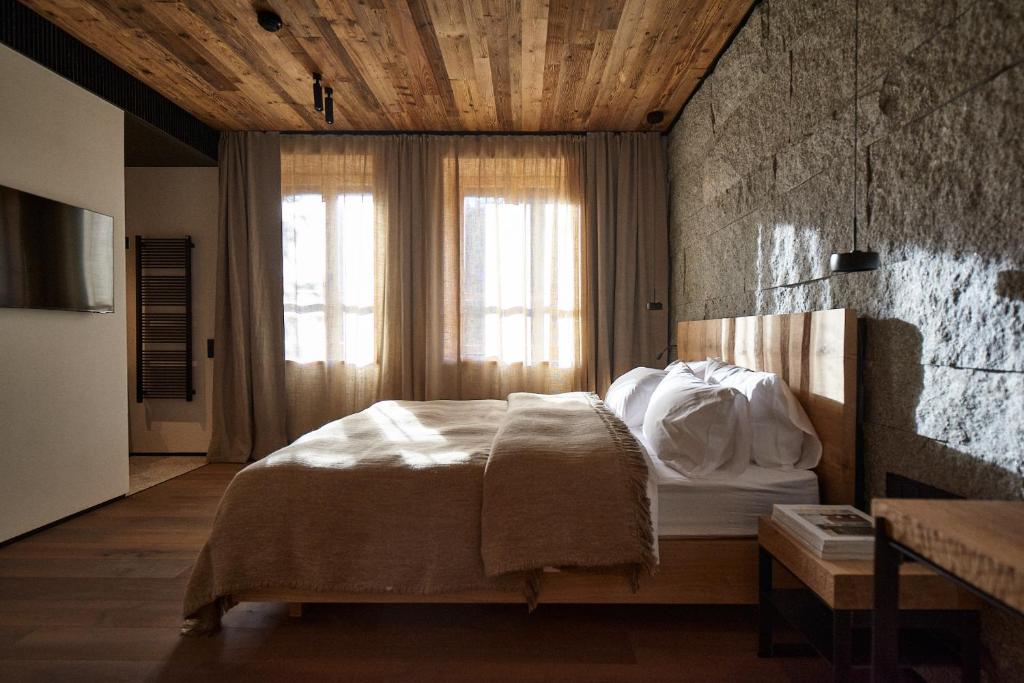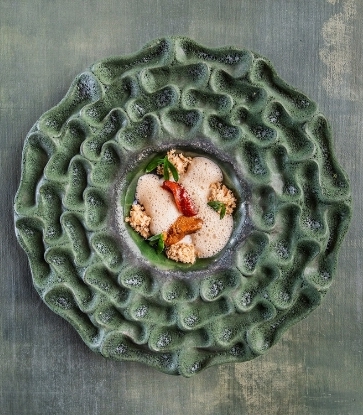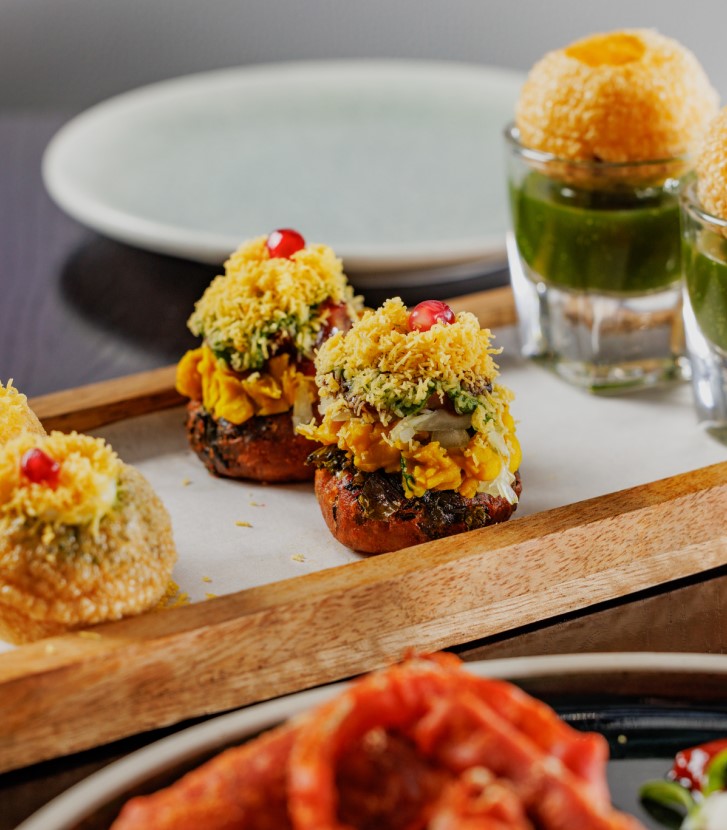Zakopane lies at the foot of the majestic Tatra Mountains, in the Podhale region in southern Poland just 100 kilometres from Kraków, the country’s most visited city by international tourists. Zakopane is an ideal getaway destination for a short break or a longer winter retreat.
The Tatra Mountains, whose highest peak culminates at 2,499 metres above sea level, are renowned for their pristine beauty, dramatic landscapes and premium winter sports conditions, ideal for cross-country skiing and snowboarding. While winter sports activities are the most obvious and more than sufficient reason to visit Zakopane, the town has much more to offer.


The Podhale region boasts a unique culture and traditional art that are only found here. Its distinctive architecture, characterised by intricate wooden craftsmanship, local music and traditional dress have long made Zakopane a destination for Polish artists seeking inspiration, in the past and still today. Emblematic figures of Polish culture such as Stanisław Witkiewicz (architect, painter and writer), Zofia Stryjeńska (painter, graphic artist and illustrator) and Karol Szymanowski (composer and pianist) fell under the region’s spell, creating significant works of art here.
A simple stroll through Zakopane’s historic centre reveals enchanting old wooden villas, featuring steep shingle-covered roofs, elaborately carved porches and stained-glass windows that bear witness to the town's artistic heritage. For a deeper insight into the region's culture, visit Tatra Museum (Muzeum Tatrzańskie), which exhibits original furniture, home accessories and outfits from the region. The collections of Villa Koliba, which is home to the Museum of Zakopane Style, displays unique pieces of local art, crafts and memorabilia.
Zakopane's strong cultural identity continues to inspire contemporary interpretations across various disciplines from art and architecture to gastronomy. For a modern take on traditional craftsmanship, visit the Antoni Rząsa Gallery. Rząsa, who is one of the most well-known local artists, works with wood, reinterpreting the Zakopane style in his own way.

It is his pieces that you will see in the lobby of the MICHELIN Guide recommended EN Hotel.This boutique hotel is nestled in Tatra National Park, giving you the opportunity to truly immerse yourself in the local culture. Originally built as a hydroelectric power plant and a paper mill, the property has been carefully restored into a haven for design enthusiasts and nature lovers. Guests are collected by staff in 4x4 vehicles, who then navigate rough mountain trails to reach the hotel which sits directly on one of the area’s most popular hiking paths. Built out of wood and granite, EN Hotel’s design pays homage to its surroundings, employing the same materials as those used in traditional homes. The hotel’s interior sports a blend of rugged alpine minimalism and a profusion of modern comforts, creating the perfect atmosphere to rest and recharge your batteries. Upon arrival, guests are treated to mountain fruit herbal teas and snacks, while evenings can be spent by the fireplace enjoying the hotel’s creative twist on a classic Negroni. The culinary offerings at EN Hotel reflect the same ethos and are rooted in Podhale traditions but presented with a contemporary flair. Visit its restaurant, Stara Papiernia ("Old Papermill"), and try kopytka dumplings with roasted pumpkin and oscypek cheese or “pierogi” (ravioli-shaped dumplings) filled with aromatic bryndza cheese and smoked trout. Finish your meal with their signature sea buckthorn cheesecake, which adds a delightful twist to a classic dessert.
The cuisine of Podhale is as unique as its architecture and has been forged by the region’s craggy terrain and often severe weather conditions. Potatoes, grains, lamb, mutton, wild forest mushrooms, berries and fermented preserves are the backbone of the traditional diet that is designed to sustain mountain labourers and help them survive the harsh winters.
To sample local flavours in their pristine form, visit one of the rustic local taverns, such as Bąkowo Zohylina Wyżnio. Start with moskole (stone-baked potato pancakes) and oscypek (smoked, aged ewe’s milk cheese that carries PDO certification) served with cranberry jam. Then try kwaśnica, a hearty soup made with sauerkraut and smoked bacon or savour a simple pan-fried river trout. The restaurant, located in a wooden house, is always busy and buzzy and often filled with the sound of live folk music.

For a modern twist to local dishes, it’s also worth visiting Stary Niedźwiedź restaurant, run by chef Marcin Filipkiewicz, previously of the MICHELIN-recommended Copernicus restaurant in Kraków. In this new venue, not yet visited by our Inspectors, he focuses on regional ingredients such as freshwater fish, cheeses, and seasonal vegetables while incorporating subtle hints of his personal fascination with Italian cuisine. The menu changes with the seasons, offering winter specialties such as warm onion consommé with duck-filled “kołduny” dumplings, velvety mushroom pâté with Jerusalem artichoke and black truffles, or venison served with celery purée and roasted chestnuts.



Zakopane’s gourmet scene has also been recognized by MICHELIN Guide Inspectors, who awarded the Giewont Restaurant a prestigious MICHELIN Star last year. Giewont takes its name from one of the most iconic and picturesque ranges of the Tatra Mountains, visible from the restaurant's panoramic windows. According to local legend, Giewont is actually a sleeping knight who will awaken if Poland is ever faced with terrible danger. Fortunately, he seems to be in a deep, peaceful slumber, leaving us to focus on sampling Giewont’s exceptional cuisine. In his cooking, Przemysław Sieradzki, head chef of Giewont Restaurant, merges two seemingly distant worlds - local Podhale produce and pedigree French technique, creating exceptional and highly personal dishes. Guests can choose between an à la carte or tasting menu, giving rise to frequent returns, be it for a quick weekday lunch or a special occasion celebration. One of Giewont’s signature creations is inspired by kwaśnica, the traditional local sauerkraut soup. Here, it takes the form of a silky velouté served with a crispy tartlet filled with juicy lamb, potato foam and topped with chervil and is an absolute must try. Other standout dishes include egg from the Lipowe Wzgórze (“Linden Hill”) farm with crispy bacon cracklings, truffle and Reblochon de Savoie foam, hot-smoked sturgeon with creamy white bean purée made from “Handsome Johnny” white beans, crispy savoy cabbage and fumet sauce, as well as locally sourced trout paired with truffle sauce and black chanterelles. For dessert, the must-try is aptly named Giewont, a masterpiece crafted using a custom-made 3D-printed mould that replicates the exact outline of the Giewont massif. Inside, it hides a smoked plum and cocoa nib mousse, finished with an Earl Grey tea froth. After your meal, you can enjoy a digestive in the cigar room, possibly sipping something from the fine selection of spirits from France and Poland while savouring the spectacular view of the mountains on the horizon.










